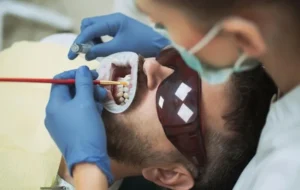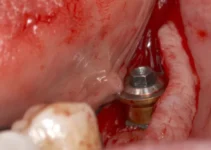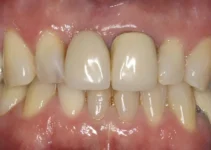Understanding the essentials of dental bridge repair can help you maintain your dental health effectively. A dental bridge is a common solution for replacing missing teeth, but over time, it may require repair due to normal wear or damage. This article delves into why bridges may need repairs, common issues that can arise, and what treatment options are available to ensure your dental appliance remains functional and aesthetically pleasing. Whether it’s re-cementing a bridge that has come loose or replacing a fractured false tooth, timely intervention is crucial to prevent further dental complications.
What is Dental Bridge Repair?
Dental bridge repair is a critical procedure in restorative dentistry designed to fix or replace a dental bridge that has become damaged or worn out over time. A dental bridge is a prosthetic device used to fill the gap created by one or more missing teeth, providing functional and aesthetic benefits to the patient.
Over time, dental bridges may experience wear and tear from biting and chewing, leading to issues such as loose fittings, cracks, or even complete detachment. Prompt repair is essential to prevent further oral health complications, including misalignment of the teeth, gum disease, and decay of the supporting teeth.
The procedure for repairing a dental bridge involves thorough examination, removal of the bridge if necessary, and careful assessment of the underlying teeth and gums. Understanding the steps involved in dental bridge repair helps patients make informed decisions and ensures the longevity of their dental restorations.
Overview of the Procedure
The procedure for dental bridge repair typically begins with a comprehensive dental examination. The dentist will evaluate the condition of the bridge, as well as the health of the supporting teeth and surrounding gums. X-rays or digital scans may be taken to identify any underlying issues that need to be addressed.
If the dental bridge needs to be removed, the dentist will perform this step with care to minimize discomfort and preserve as much of the natural tooth structure as possible. Removal may involve:
- Gently prying the bridge from its position
- Cutting the bridge into sections for easier extraction
- Applying local anesthesia to ensure patient comfort
Once the bridge is removed, the dentist will clean the area and assess the condition of the supporting teeth. If decay or damage is present, additional treatments like fillings or root canals may be necessary before fitting a new bridge or repairing the existing one.
The final steps involve either repairing the existing dental bridge by addressing any cracks or fitting issues, or creating a new bridge. The dentist will take precise impressions or digital scans of the patient’s mouth to ensure a perfect fit. The restored or new bridge is then cemented into place, followed by a thorough check to ensure proper alignment and function.
For more in-depth information regarding dental procedures and to continue expanding your knowledge on maintaining oral health, we encourage you to read our other articles on restorative dentistry and preventative care.
Common Issues with Dental Bridges
Dental bridges are a popular solution for replacing missing teeth, providing both aesthetic and functional benefits. However, like any other dental restoration, bridges can encounter issues over time. Understanding these common problems can help patients and dental professionals proactively manage and mitigate them. This article will delve into some of the most prevalent issues associated with dental bridges, including wear and tear, damage from injury, and decay under the bridge.
Addressing these issues promptly is crucial for maintaining oral health and ensuring the longevity of the dental bridge. By being aware of potential problems and knowing how to handle them, patients can enjoy the full benefits of their bridges and avoid additional dental complications.
Wear and Tear
Over time, dental bridges are subjected to the natural forces of chewing and biting, which can lead to wear and tear. Just as natural teeth can wear down, so too can the materials used in dental bridges. This gradual erosion can affect the bridge’s structural integrity and its ability to function effectively.
Materials commonly used for dental bridges, such as porcelain and ceramic, are designed to be durable, but they are not impervious to the rigors of daily use. Patients may notice signs of wear, such as surface roughness or minor chips, which can impact the bridge’s appearance and functionality. Regular dental check-ups are essential to monitor these changes and address them before they become more significant issues.
Damage from Injury
Accidents happen, and dental bridges are not immune to damage from unexpected injuries. Trauma to the mouth, whether from sports activities, falls, or other incidents, can result in cracks, chips, or even complete dislodgement of the bridge. Such damage not only affects the bridge’s performance but can also cause pain and discomfort.
To mitigate the risk of injury-related damage, patients are advised to wear mouthguards during high-risk activities and practice good oral hygiene to maintain the bridge’s stability. If an injury occurs, prompt dental attention is essential to assess the extent of the damage and determine the appropriate course of action, which may involve repair or replacement of the bridge.
Decay under the Bridge
One of the most concerning issues with dental bridges is the potential for decay under the bridge. Despite being artificial, the abutment teeth (the natural teeth supporting the bridge) are still susceptible to decay if not properly cared for. Plaque and bacteria can accumulate around the bridge, leading to cavities and gum disease.
Maintaining excellent oral hygiene is crucial to prevent decay under the bridge. This includes
- daily brushing
- flossing
- using antibacterial mouthwash
- regular dental cleanings
. Patients should pay special attention to cleaning around the bridge and use specific tools like interdental brushes or water flossers to reach difficult areas. If decay is detected early, it can often be treated without removing the bridge. However, severe decay may necessitate more extensive treatment, including possible replacement of the bridge.
Understanding and addressing these common issues with dental bridges can help ensure their longevity and functionality. For more in-depth information on dental care and the latest advancements in implantology and bone regeneration, be sure to explore our other articles.
Steps Involved in Repairing a Dental Bridge
Repairing a dental bridge is a multi-step process that requires careful planning and execution. The goal is to restore the functionality and aesthetics of the bridge while ensuring long-term durability. Understanding the steps involved is crucial for both the dental professional and the patient.
Each stage, from initial consultation to the final adjustments, plays a vital role in the successful repair of a dental bridge. Early intervention and proper assessment can mitigate complications and enhance the overall outcome. Here we outline the essential steps involved in repairing a dental bridge to provide a comprehensive overview.
Consultation and Assessment
The first step in repairing a dental bridge is a thorough consultation and assessment. During this visit, the dentist will evaluate the condition of the existing bridge, surrounding teeth, and overall oral health. This comprehensive examination often includes X-rays and other diagnostic tools to identify any issues with the supporting structures.
Understanding the underlying cause of the bridge failure is crucial. Common reasons for bridge damage include material wear, decay of abutment teeth, or trauma. Early and accurate diagnosis allows the dentist to create a tailored treatment plan. During the consultation, it’s also essential to discuss the patient’s medical history, oral hygiene habits, and any symptoms they might be experiencing. This detailed assessment helps in determining the appropriate course of action and in setting realistic expectations for the repair process. Effective communication at this stage can greatly influence the success of the treatment.
The outcome of the consultation and assessment phase lays the foundation for the subsequent steps in the repair process. It ensures that the treatment plan is customized to meet the specific needs of the patient, thereby enhancing the likelihood of a successful dental bridge repair.
Common Questions About Dental Bridge Repair
Understanding the basics of dental bridge repair can help alleviate any concerns patients might have when they encounter issues. Below are some frequently asked questions that provide essential insights into the process and expected outcomes.
What are the signs that a dental bridge needs repairing?
Signs that a dental bridge may require repair include noticeable looseness, discomfort or sensitivity when chewing, an altered bite, or visible damage like cracks or chips in the dental bridge. Experiencing any of these symptoms suggests that a visit to the dentist might be necessary to assess the need for repairs.
How is a dental bridge repaired?
The method of repair often depends on the type of damage and the underlying cause. If the bridge is loose, re-cementing might be required. For cracks or damage, the bridge may either be repaired with a resin that matches the color of the existing teeth or, in some cases, replaced entirely. It is critical to consult with a dental specialist to determine the appropriate course of action.

My name is Salman Kapa, a 73-year-old expert in bone regeneration and dental implantology. With decades of experience in the field, I am dedicated to advancing our understanding of oral health and hygiene. Through my research and writing, I aim to contribute to the development of innovative solutions in dental care.




